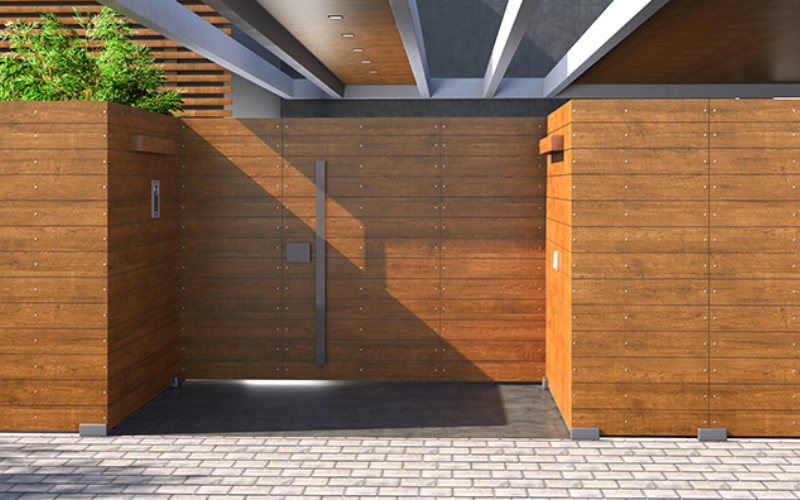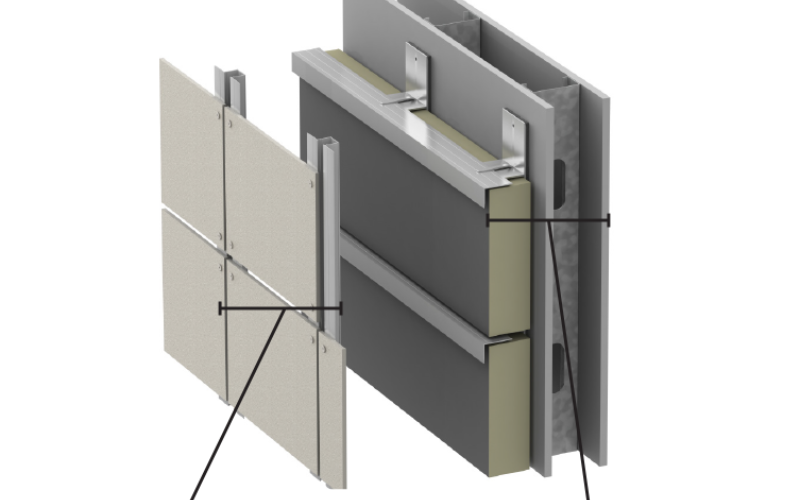PL: BECS has been able to create new systems and components because of its in-depth familiarity with exterior wall claddings. Ten years before “rain-screen” assemblies were prominent in local markets, PLBECS’s self-drying Zephyr Drain-Vented cladding systems were utilized.
PLBECS’s publication Zen of Brick has been used as a training resource for masonry schools and as a design guide for a wide range of brick-clad buildings. Tilt-up and cast-in-place concrete, wood and metal sidings, terra cotta, stucco, wall flashings, coatings, penetrating water repellents, and related materials are all areas of expertise.
Understanding Exterior Wall Cladding Systems
Exterior wall cladding refers to the process of putting a protective coating or substance on the outside of a building’s walls. These measures are taken to further insulate the building, provide soundproofing, shield it from the weather, and enhance its visual attractiveness.
High-quality cladding materials allow building owners to transform the look of their structures while guaranteeing long-term functionality.

Benefits of Exterior Wall Cladding Systems:
- Enhanced Aesthetics: Exterior wall cladding systems can improve a building’s visual appeal by providing a blank canvas for creative expression through the use of a wide range of materials, textures, colors, and patterns. Cladding can give a structure a far more attractive look, whether you’re going for a modern, rustic, or classic style.
- Weather protection: Protection from the elements, especially wind, rain, and ultraviolet (UV) radiation, is essential for buildings. The cladding prevents the underlying structure from being harmed by rain, snow, wind, and other sources of moisture.
- Improved insulation: Materials like mineral wool or foam can be used in cladding systems to assist keep the inside at a suitable temperature. Energy efficiency, heating and cooling expenses, and occupant comfort can all benefit from insulation’s insulating qualities.
- Durability and Longevity: High-quality exterior shell materials are built to last for many years. They won’t fade, crack, or warp, so the building’s exterior will stay in pristine shape and look great for years to come.
Exterior wall covering options are more low maintenance than other wall coverings. Most cladding materials only need to be cleaned regularly to look their best, not to be painted, sealed, or repaired.
Types of Exterior Wall Cladding Systems:
- Vinyl Cladding: Vinyl cladding is a popular choice because it requires little maintenance, can be easily customized, and is inexpensive. It is available in a wide range of colors and materials, so you can create anything your imagination puts your mind to.
- Wood Cladding: Cladding made of wood looks timeless and natural. It is treatable, so it can be further protected from rot, insects, and fire. Care must be taken to prevent wear and tear over time.
- Metal cladding: Cladding made of metals such as steel, zinc, or aluminum is a popular choice for its modern look. It has earned an illustrious reputation for its ductility, longevity, and corrosion resistance. Metal-enclosed systems often have excellent thermal performance.
- Fiber cement cladding: To make fiber cement cladding, cement is mixed with cellulose fibers and other chemicals. It provides durability, resistance to fire, and dimensional stability. Fiber cement can be made to look like stone, brick, or even wood, and requires very little maintenance.
Conclusion
Due to their many practical and aesthetically pleasing benefits in terms of longevity, insulation, protection, and weatherproofing, exterior wall cladding systems have become an integral part of contemporary building design. Choosing the best cladding material and method can do wonders for a building’s attractiveness, durability, and the amount of maintenance required. Whether new construction or a renovation, spending the money on a quality exterior wall cladding system made of vinyl, wood, metal, or fiber cement is a wise choice.


напольное кашпо для нескольких цветов https://www.kashpo-napolnoe-msk.ru – напольное кашпо для нескольких цветов .